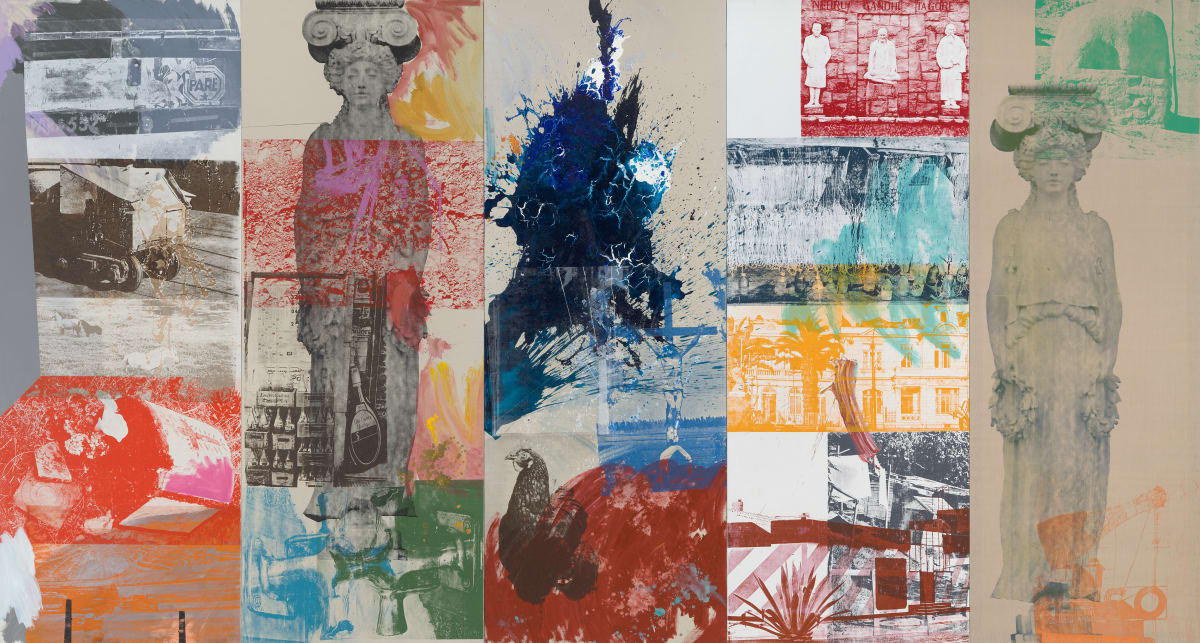Backs and Fronts: The painting that changed the course of art by Kelly Grovier
The artist Sean Scully's Backs and Fronts 'peeled back the superficial veneer of things to reveal the invisible geometry that pulses beneath', writes Kelly Grovier
Some great works of art give us symbols to decode. Others decode us. Sean Scully's Backs and Fronts, an enormous 20-foot-long, 11-panel painting of strident stripes and raucous rhythms that thrums beyond the borders of itself, is one of those. It changed the course of art history in the early 1980s by restoring to abstract painting a dimension it had lost – its capacity for intense feeling. Last year, when global lockdowns were forcing the world to look inside itself, I spent dozens of hours on the phone with the Irish-American artist, now in his 70s, discussing everything from his homeless infancy on the streets of Dublin in the 1940s to how he came to create one of the most important works of the past half century – a work widely credited with rescuing abstract art from the brink of irrelevance.
What emerged from those conversations with Scully – whom the legendary art critic and philosopher Arthur Danto once described as "an artist whose name belongs on the shortest of short lists of major painters of our time" – is an unexpectedly inspirational tale of personal struggle, resilience, and creative triumph. The soulful stripes and bricks of battered colour that have come to define Scully's visual language in the decades since the watershed creation of Backs and Fronts in 1981 are anything but coldly calculated, meticulously mathematical, or emotionally inert. Scully's canvases are loaded not only with a profound understanding of the history of image-making – from Titian's command of colour to the way Van Gogh consecrates space – but with the mettle of a life that has weathered everything from abject poverty, to the death of his teenage son (who was killed in a car accident when the painter was in his 30s), to the envious resistance of a critical cabal in New York that begrudged his achievements. Time and again, art has proved Scully's salvation.
Backs and Fronts, whose very title suggests a determination to peel back the superficial veneer of things to reveal the invisible geometry that pulses beneath, was created at a moment in the early 1980s when the dominant movement in abstract art, Minimalism, had painted itself into a corner. Minimalism had succeeded in stripping from its austere surfaces every trace of human emotion. For decades, ever since the American artist Frank Stella had begun cramming his canvases in the late 1950s with sullen strips of bleak black paint, Minimalism gradually sank deeper and deeper into the black hole of its own aesthetic aloofness, leaving the hearts and souls of observers further and further behind. As the American sculptor Carl Andre, who would himself become a leading figure in the Minimalist movement in the 1960s and 70s with shallow piles of drab bricks, noted in a catalogue essay that accompanied an exhibition of Stella's canvases at the Museum of Modern Art in 1959, "Frank Stella is not interested in expression or sensitivity," Andre observed. "His stripes are the paths of brush on canvas. These paths lead only into painting."
By the late 1970s, it became clear that fewer and fewer people were content to be abandoned in and by a painting. What one wants, has always wanted, is a way back to themselves and to arrive as if for the first time. In the face of Minimalism's relinquishment of motives and emotion, Scully's Backs and Fronts blared defiantly. So much so, that the British conceptual artist Gillian Wearing has hailed it as having "broke[n] the logjam of American minimalist painting". Its clashes of colour and discordant cadences of gestural stripe – shoving this way and that, and bouncing like the bars of a digital equaliser – were more than merely an audacious rejoinder to Minimalist severities. They were a call to arms. "I was working my way out of what I considered to be the Minimalist prison," Scully told me in one of the many exchanges chronicled in my new book On the Line: Conversations with Sean Scully. "At that time, my contemporaries and friends in New York were absolutely stuck in Minimalism or process art – repeating brushstrokes or making geometric divisions that were relentlessly rational… So Backs and Fronts caused a lot of attention. It made noise."













































































































































































